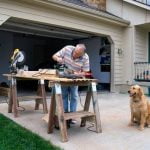Are you wondering how to improve the wifi in your home? In today’s digital age, a strong and reliable wifi connection has become essential for both work and leisure. Whether you’re working from home, streaming movies, or simply browsing the internet, a slow or spotty wifi signal can be incredibly frustrating. In this article, we will explore various strategies and tips to help you enhance the wifi in your home, ensuring a seamless online experience.
Assessing the current state of your wifi is the first step toward improving its performance. Understanding how to check the signal strength and identify weak spots in your home will allow you to pinpoint areas that need improvement. From there, we’ll delve into the process of upgrading your router. Choosing the right router for your home and optimizing its settings are crucial steps in achieving optimal performance.
In addition to upgrading your router, we will discuss methods for extending your network coverage throughout your home using wifi extenders, mesh systems, and powerline adapters. You’ll also learn about identifying and minimizing potential sources of interference that may affect your wifi signal, as well as maximizing your router’s range by positioning it in the right location within your home.
Lastly, we’ll touch on future-proofing your wifi connection to ensure high-speed reliability in the long run. Stay tuned to discover expert advice on achieving a powerful and consistent wifi connection at home.
Assessing the Current State of Your Wifi
Checking Signal Strength
The first step in improving your home wifi is to assess the current state of your network. This involves checking the signal strength throughout your home to identify any weak spots that need attention. Most modern routers come with built-in signal indicators that can help you determine the strength of your wifi signal.
You can also use apps or software tools on your smartphone or computer to measure signal strength in different areas of your home. By doing so, you can pinpoint where the signal is weakest and take steps to improve it.
Identifying Weak Spots
In addition to checking signal strength, it’s important to identify specific areas in your home where the wifi connection is poor or non-existent. Common weak spots include basements, attics, and distant rooms from where the router is located. Research has shown that certain building materials such as concrete, metal, and brick can also weaken wifi signals.
As you move around your home with a device connected to wifi, take note of any areas where the connection seems slow or drops completely. Mapping out these weak spots will help you develop a plan for improving the overall coverage and performance of your network.
Conducting a Site Survey
For a more comprehensive assessment of your wifi network, consider conducting a site survey using specialized tools or professional services. A site survey involves analyzing factors such as wireless interference, signal-to-noise ratio, and channel overlapping to provide detailed insights into the strengths and weaknesses of your network.
This information can be valuable when making decisions about upgrading equipment, extending network coverage, or adjusting router settings for better performance. While conducting a site survey may require some technical knowledge or assistance, it can lead to significant improvements in your home wifi experience.
Upgrading Your Router
When it comes to improving the wifi in your home, upgrading your router is often a necessary step. With the increasing demand for faster internet speeds and greater coverage, choosing the right router can make a significant difference in your home network’s performance. Here are some tips for upgrading your router:
- Assess your internet needs: Before choosing a new router, it’s important to assess your internet needs. Consider how many devices will be connected to the network, the size of your home, and the internet speed provided by your service provider.
- Choose the right type of router: There are different types of routers available, including single-band, dual-band, and tri-band routers. Dual-band routers are suitable for most homes as they offer both 2.4GHz and 5GHz frequencies, providing better connectivity for a variety of devices.
- Consider advanced features: Look for routers with advanced features such as Quality of Service (QoS), which prioritizes certain types of traffic for better performance, and Beamforming technology, which enhances signal strength and range.
- Set up the router properly: Once you’ve chosen the right router for your home, it’s essential to set it up properly for optimal performance. This may include updating the firmware, setting a strong password, and adjusting other settings as needed.
By upgrading to a new router that meets your specific needs and setting it up correctly, you can significantly improve the wifi in your home and enjoy faster speeds and better coverage throughout your living space.
Extending Your Network
Using Wifi Extenders
Wifi extenders are devices that can help improve wifi coverage in areas of your home where the signal is weak or non-existent. These devices work by receiving the existing wifi signal, amplifying it, and then transmitting the boosted signal. When considering a wifi extender, it’s important to choose one that is compatible with your current router and is capable of covering the necessary range within your home.
Mesh Systems for Seamless Coverage
Another option for extending your network is to invest in a mesh wifi system. Unlike traditional extenders, mesh systems use multiple nodes placed throughout your home to create a single, seamless network. This allows for consistent coverage and eliminates dead zones. Mesh systems are ideal for larger homes and provide the flexibility to add more nodes if needed for additional coverage.
Powerline Adapters as an Alternative
For areas of your home where wireless connectivity is not feasible or effective, powerline adapters offer a solution. This technology uses your home’s existing electrical wiring to transmit data signals, providing a wired connection without the need for extensive cabling. Powerline adapters can be especially useful for devices that require a stable and high-speed connection such as gaming consoles or smart TVs.
Optimizing Wifi Settings
When it comes to optimizing your wifi settings, there are a few key adjustments you can make to ensure better performance and security for your home network. Here are some tips for adjusting your router’s settings:
- Change the Wifi Channel: By default, your router may be set to a specific wifi channel that could be congested due to other nearby networks. Changing the channel can help reduce interference and improve signal strength.
- Enable Quality of Service (QoS): QoS settings allow you to prioritize certain types of internet traffic, such as video streaming or online gaming, over others. This can help improve the overall performance of your network.
- Update Firmware: Routinely updating your router’s firmware ensures that it has the latest security updates and bug fixes, which is crucial for protecting your home network from potential threats.
- Set Up Guest Network: If you have guests frequently visiting your home, setting up a separate guest network can help improve security by keeping them on a separate network from your personal devices.
In addition to these adjustments, it’s important to consider the security of your wifi network. Be sure to change the default administrator password for your router and use a strong password for your wifi network to prevent unauthorized access.
By making these simple changes to your router’s settings, you can significantly improve the performance and security of your home wifi network.
Eliminating Interference
When it comes to optimizing your home wifi connection, it’s important to be aware of potential sources of interference that can disrupt the signal and impact its strength. Electronic devices such as cordless phones, baby monitors, microwave ovens, and Bluetooth devices can all contribute to interference with your wifi signal. To minimize this interference, consider relocating these devices away from your router or using a dual-band router that operates on both the 2.4GHz and 5GHz frequencies.
In addition to electronic devices, physical barriers within your home can also hinder the performance of your wifi network. Thick walls, floors, and ceilings made of concrete or metal can block or weaken the wifi signal as it tries to reach different areas of your home.
To address this issue, you may want to strategically place your router in a central location or consider using wifi extenders or mesh systems to help extend coverage to areas that are difficult for the signal to reach.
Another common source of interference is neighboring wifi networks operating on the same channel as yours. This can result in congestion and degraded performance for all networks involved. To mitigate this issue, you should check which channels are being used by other nearby networks and adjust your router’s settings accordingly to operate on a less crowded channel.
Overall, being mindful of potential sources of interference is crucial when aiming to improve the wifi connection in your home. By addressing these issues and taking proactive measures to minimize interference from electronic devices, physical barriers, and neighboring networks, you can ensure a stronger and more reliable wifi signal throughout your living space.
| Interference Source | Minimization Technique |
|---|---|
| Electronic Devices | Relocate devices away from router or use a dual-band router |
| Physical Barriers | Strategically place router in a central location or use wifi extenders/mesh systems |
| Neighboring Networks | Adjust router settings to operate on less crowded channel. |
Positioning Your Router
When it comes to improving the wifi in your home, one of the most important factors to consider is the positioning of your router. The placement of your router can have a significant impact on its range and effectiveness in providing a strong wifi signal throughout your home. There are several key considerations to keep in mind when positioning your router to ensure optimal performance.
First and foremost, it’s essential to place your router in a central location within your home. This will help ensure that the wifi signal is evenly distributed to all areas of your living space, minimizing any potential dead zones or weak spots. Additionally, placing the router at an elevated position, such as on a high shelf or mounted on the wall, can also improve its coverage and reach.
Another important aspect to consider is minimizing obstacles and interference that may disrupt the wifi signal. Avoid placing the router near large metal objects, concrete walls, or other electronic devices such as cordless phones or baby monitors, as these can all hinder the signal strength. Instead, opt for an open and unobstructed area for optimal performance.
Lastly, it’s worth noting that different types of routers may require different positioning strategies depending on their specific antenna configurations. Some routers have omni-directional antennas that emit signals in all directions, while others have directional antennas that focus the signal in a specific direction. Understanding your router’s antenna type can help you fine-tune its placement for maximum coverage and effectiveness within your home.
| Consideration | Placement Strategy |
|---|---|
| Central Location | Place router in the middle of your home |
| Elevated Position | Mount or place router on a high shelf |
| Obstacle Avoidance | Avoid metal objects and electronic devices near router |
| Antenna Configuration | Understand type of antennas on your router for optimal placement |
Future-Proofing Your Wifi
In conclusion, it is clear that ensuring a strong and reliable wifi connection at home requires a combination of careful assessment, strategic upgrades, and ongoing maintenance. By following the tips and guidelines outlined in this article, you can significantly improve your wifi coverage and performance. However, it is important to remember that technology is ever-evolving, and staying ahead of the game is crucial for long-term satisfaction with your home wifi network.
As mentioned in this section, future-proofing your wifi involves keeping abreast of the latest technologies and trends in the industry. This may include upgrading to the newest router models that offer improved speed, range, and security features. It also involves being aware of emerging wifi standards such as Wi-Fi 6, which promises to deliver faster speeds and better performance in densely populated areas.
Additionally, staying ahead of the game with future-proofing your wifi means being proactive about potential issues such as network congestion and security threats. By remaining informed about best practices in optimizing wifi settings and eliminating interference, you can ensure that your home network continues to provide a high-speed, reliable connection for years to come.
Ultimately, by investing time and effort into future-proofing your wifi today, you can enjoy the benefits of a robust network well into the future.
Frequently Asked Questions
How Can I Boost My WiFi Signal at Home?
Boosting your WiFi signal at home can be achieved through several methods. One way is to reposition your router to a central location in your home and away from any potential interference.
Additionally, upgrading to a more powerful router or using WiFi extenders can also improve the signal strength throughout your home. Ensuring that your router’s firmware is up-to-date and using the latest WiFi technology can also help boost your signal.
How Can I Make My Home WiFi Faster?
Making your home WiFi faster involves a few steps. First, you can try optimizing your router settings by adjusting the channel or frequency to reduce interference.
Upgrading to a faster internet plan offered by your service provider can also significantly increase the speed of your home WiFi. Another option is to use Ethernet cables for devices that require a stable and fast connection, which can free up WiFi bandwidth for other devices.
How Can I Improve My WiFi Working From Home?
Improving your WiFi while working from home starts with ensuring that you have a reliable and fast internet connection. Using a wired connection where possible, such as with an Ethernet cable, can provide greater stability than relying solely on WiFi.
You may also want to consider investing in a mesh network system or range extenders to ensure that your entire home has consistent coverage for video conferences, file sharing, and other work-related activities. Regularly monitoring and managing the number of devices connected to your network can also help optimize its performance for remote work tasks.

I’m thrilled to have you here as a part of the Remodeling Top community. This is where my journey as an architect and remodeling enthusiast intersects with your passion for transforming houses into dream homes.





